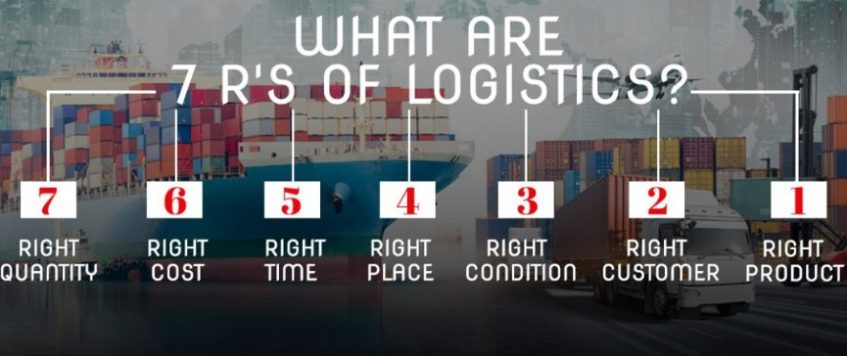-
14
Feb
The 7 R’s of Supply Chain Management
Supply chain management establishes the strategies with which a supply chain will be overseen as well as dictating the way in which tasks are discovered and remedied.
In supply chain management, there is a concept known as the 7R’s…
The Right Product – The goods, materials, or services offered
Supply and demand are at the forefront of supply chain management. Yet, it isn’t just understanding which markets are flourishing and which markets are declining.
Knowledge of not only the existing market but of the product’s liability is essential. While the market for a particular product may be high currently, it might have a history of low demand or a consistently declining ROI.
Supply chain managers must know which markets are worth investing capital in to have an ROI. Look at well-performing markets, measure the product against the competition already in the market, and determine which goods will provide the highest ROI.
But that’s just the first part of it. After all, this is all about the supply chain, so this concept goes a lot deeper than simply finding a profitable or scalable niche in the marketplace.
You also need to be able to deliver the correct product, on time, every time.
The Right Customer – Think long-term supply chain management
While customers outside of your target market may wish to use your product or services, it is critical that you focus your attention on the long-term gain you seek from your primary audience. Seeking out customers who require your products, goods, or services on a regular basis will ensure that you remain relevant in the marketplace.
Sustainability is also maintained by seeking out clientele who can potentially bring new customers into the fold through word-of-mouth referrals.
Essentially, if you give your current clients or customers a positive experience they are more likely to refer new clients to you in return.
The Right Location – Ensure goods go where they should
Let’s talk about location…
There is a substantial amount of distance between Buffalo, New York, and Buffalo, Wyoming. Building connections with partners in regions closer to your primary customer base gives you the ability to fulfill and deliver orders to those customers quicker than if your primary fulfillment center was located several cities away from them.
Supply chain managers must also assemble teams that can deliver products and goods to the correct location, on time, every time. Generally, this means implementing location tracking software, as well as keeping open and uninterrupted communication with their drivers.
The Right Price – Establish competitive prices based on market data
A price is an integral part of the quality of the services provided.
Markets fluctuate based upon the supply and demand of any given product. Additionally, the location of the demand dictates variations in the price of the supply.
So, you should keep close tabs on the yield potential of your product while being competitive in the current market.
Software which monitors variations in costs is essential to maintaining this sort of competitive edge. As prices for goods and services change, you must evaluate costs to ensure you reduce costs while increasing margins.
The Right Time – Keep your deliveries on time
From receiving to fulfillment, supply chain managers must ensure smooth processes throughout the supply chain in order to speed up delivery times.
Here are just a couple of really simple ways to begin reducing your delivery times:
- Software algorithms should take into account traffic patterns, time zones, and typical delays.
- Supply chain managers should be able to easily relay any known potential delay factors to their transportation teams.
- Customer forecasts should include the dates when they can expect high volumes or other delays. This transparency ensures that the customer has the opportunity to schedule deliveries around peak shipping days and the like.
Delivering products on time is better than the reputation of over-promising and not being able to fulfill orders. Supply chains can deliver products even before their deadlines if they use the appropriate tracking software and calculate deterrent factors.
The Right Quality – Ensure the condition of your goods
On-time deliveries are of little significance to your customer if the products are defective or damaged.
It is important to understand how to store and handle goods to ensure they arrive intact and to build positive relationships with customers. The quality of your product is the lifeblood of your supply chain.
Understand various conditions which may affect the overall quality of your product, including last-mile issues.
The Right Quantity – Meeting the demand
Even though this is last on our list, it is also probably one of the most neglected steps that, in turn, lead to things like backorders and stockouts can be avoided by simply paying close attention to the generated re-order levels and inventory.
The utilization of WES and WMS platforms can help prevent these types of backorders and delays.
Nevertheless, even if the product inventory is checked, the quantity of the product should be visually inspected before delivery. Additionally, any products which require multiple modes of transportation should verify order information at each transitional stage.
Adhering to the 7 R’s of Supply Chain Management
Customers can validate or discredit your supply chain based on your adherence to these 7 fundamental principles.
It is essential that supply chain managers use supply chain management software and implement teams that adhere to these 7 R’s regularly.

